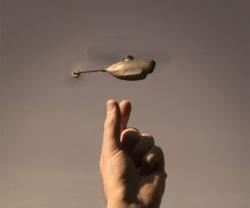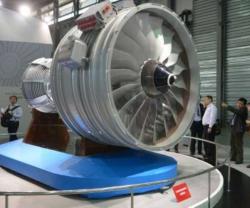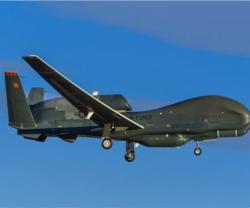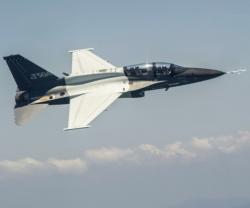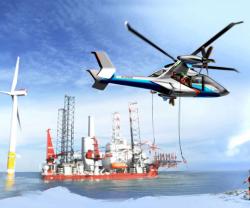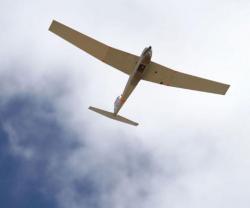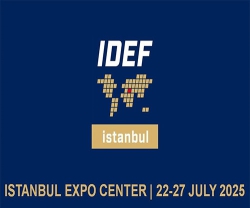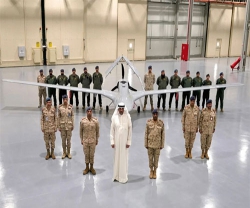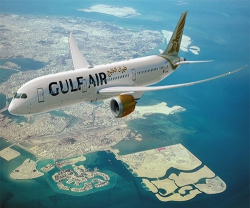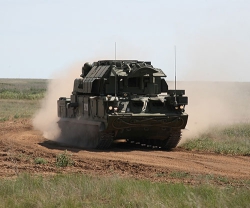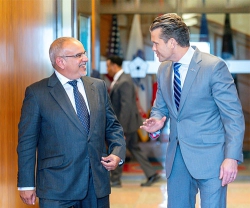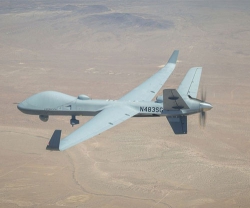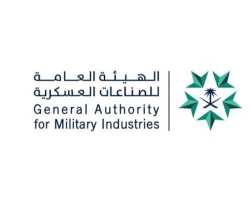The Agency is already supporting a wide range of projects in the air domain fostering cooperation among Member States. However, new results from a recent EDA study suggest that while the air defense industry is still healthy, important industrial capabilities are eroding. Without additional concerted action, the situation will soon become critical, for example for the development of future combat aircraft (manned and unmanned) and attack helicopters.
Military aviation is paramount in enabling EU Member States to meet their national security and defence requirements. Additionally, the industry has long been a driver for innovation, producing cutting edge technology that contributes to wider economic growth in Europe. Around 200,000 people in high-tech jobs are currently directly employed in the sector. It comprises important system integrators and a dynamic and innovative supply chain rich in SMEs.
The industry generates an annual turnover of approximately 45 billion euro. This technically advanced sector is a key supporting component of strong European military capabilities. Recent EDA-sponsored work has shown that Europe risks losing significant industrial know-how between now and 2020. This includes the ability to produce advanced combat aircraft. Moreover, Europe risks falling significantly behind the global competition in UAS capabilities.
“Europe has successfully managed to join forces in two fields closely related to military aviation: space and civil aviation. If we want a similarly strong and independent aeronautics defence sector, we have to set the course now”, said Claude-France Arnould during the EDA Future Air Systems Conference at ILA Berlin.
With budgets under pressure and joint operations more and more common, the EDA is playing a key role in pooling and sharing vital defence capabilities in Europe. Notably in the area of air operations, a number of successful projects are being conducted:
- EDA’s air-to-air refuelling initiative is supporting Member States in developing interoperable European solutions to overcome current shortfalls, and propose options for future requirements in this respect.
- Bringing together air crews from across Europe to train and qualify together in airlift disciplines is the aim of the European air transport training. The first training event was held successfully in Zaragoza, Spain in June this year. More exercises will follow in 2013.
- To date, military airworthiness activities have been conducted and regulated on a national basis. This generates many problems in multinational programmes and is a primary cause for delay and additional cost. The EDA is a key player in working towards an EU-wide harmonisation and unification strategy on military airworthiness which will make the process more efficient and will help to reduce costs.
- The EDA’s Helicopter Training Program provides a framework to Member States to allow them to develop, consolidate and share best practices to meet the challenges of flying helicopters in the modern operational environment. EDA has to date delivered 4 exercises: one in Gap, France, one in Logrono, Spain, one in Viterbo, Italy and one near Porto, Portugal. A 5th one, Green Blade 2012, will be held in Belgium at the end of September. These exercises have met an urgent training requirement for the participating Member States, greatly enhancing the helicopter capacity available. They are complemented by the EDA’s three-week Helicopter Tactics Course, being held in 2012.
- The Agency has worked on Unmanned Aerial System (UAS) issues since its inception, and in 2007 it received an explicit directive from European defence ministers to examine the challenges to UAS air traffic insertion. Apart from facilitating concrete projects (e.g. Midair Collision Avoidance project (MIDCAS)) and funding studies (e.g. Study on military spectrum requirements for the insertion of UAS into general air traffic (SIGAT)), the EDA cooperates with European and international organisations to move forward technical, regulatory and standardisation issues.
Almost 30 industrial entities, representing a significant proportion of Europe’s military aviation industry, were involved in the twelve month FAS4Europe study under the leadership of Saab AB. Its aim was to analyse the current state of the European air defence industry, to identify the sector’s strengths and weaknesses and to provide a roadmap and implementation plan.
The main result of the study is that the European military aeronautical industry is now losing capabilities. The situation for future air systems is severe, with some important industrial capabilities and technologies already at risk. The study highlights that an opportunity exists to break the current trend of erosion. However, it requires the launch of actions based on a common and coordinated plan.
The EDA study thus sets out a roadmap of projects and demonstrator programs. This roadmap includes proposals to work on:
- Technologies for advanced intelligence, surveillance, and reconnaissance UAS
- Increasing air system survivability against future threats (rotary and fixed wing)
- Improving the lifecycle affordability of military aircraft (rotary and fixed wing)
Additionally, the study highlights the potential to link civil-military research and development to exploit synergies within the civil aerospace market. Finally, it strongly suggests co-operative European aerospace development programmes to avoid further fragmentation.
“The EDA will address the issue of a common European approach with stakeholders and will raise it at Board level. “What is in question today is Europe’s future ability to design and develop advanced new military aircraft. The Agency aims to make a strong case for strategic European cooperation for future air systems”, Claude-France Arnould concluded in Berlin.


